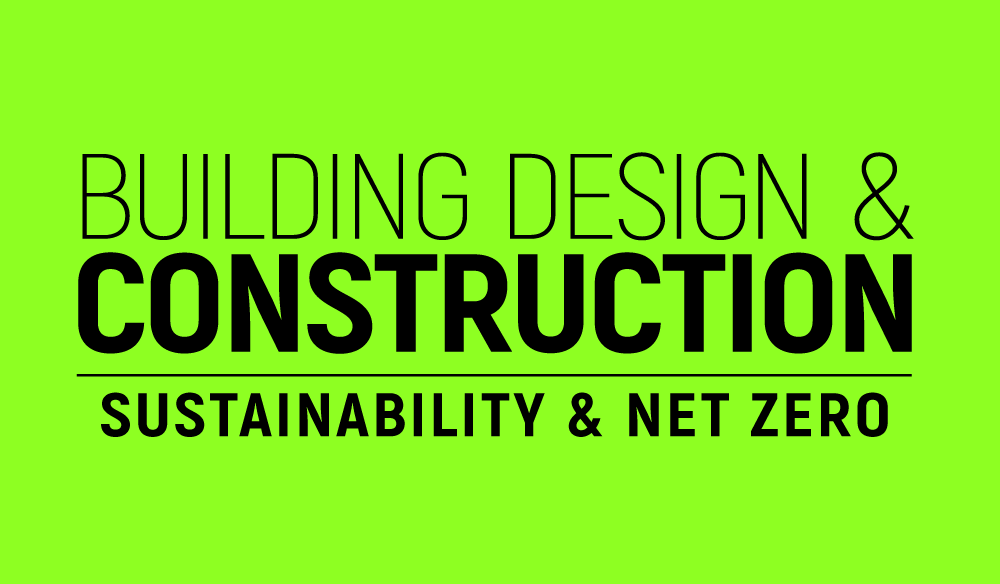Latest findings show an uptick in Net-Zero projects and sustainability success

- New research indicates around seven in ten construction projects now have sustainability targets
- Number of people achieving sustainability is also increasing – four in ten reach green goals
- Report reveals 13% uptick in Net-Zero Projects compared with 2022 report
- Record number of organisations now measure their carbon footprint, with a 16% increase
- ‘Cost’ becomes main barrier to achieving sustainability, impacted by tough economic landscape

NBS, a leading specification and product information platform for the construction industry, has discovered steady growth in the sector’s efforts towards sustainability, showing that the number of Net Zero projects and those achieving environmental targets is on the rise.
The ‘green gains’ were found in NBS’ Sustainable Futures Report, in association with Royal Institute of British Architects (RIBA). Now in its fourth iteration, it shows the number of Net-Zero projects being commissioned is increasing. Six in ten industry professionals (64%) have worked on a Net Zero project in the past year – a sign of the sector’s growing focus on low-carbon construction. This is compared with around half of all respondents in 2022 (49%).
The study, which surveyed almost 600 people working within the built environment, aims to understand sustainability attitudes and protocols in the construction sector. Since launching in 2022, it has provided an industry benchmark for evolving views and opinions, shaping best practice guides on the journey to Net-Zero.
Figures on the number of people who had ‘accomplished sustainability’ were also included. 43 percent or around four in ten said they had been successful (vs a third back in 2022). Interestingly, this sentiment was felt most strongly amongst clients but was slightly lower for architects (35%).

In addition to reducing the sector’s environmental impact, these stats could show that target-based construction is making a difference. This is alongside other factors such as product availability, and the increasing use of building product data – which is crucial for architects to ascertain the ‘greenest’ product or material.
However, despite the optimism, barriers to sustainability persist. The primary reason is now cost, whereas in previous years it was due to a lack of client demand. This is unsurprising given recent external forces such as a stagnating economy, cost of living crisis, and price surges for building products and materials. Though clients are clearly starting to see the downstream value of sustainable assets, which is also backed up by the increase in certification to BREEAM within the commercial sector.
Another notable difference is the number of organisations measuring their carbon footprint. Seven in ten firms now measure emissions (70%) compared with just five in ten (54%).
Those setting carbon reduction goals have also risen by fourteen percent (76% up from 62%) as did the number of companies choosing to offset carbon. Over half of firms now have carbon offsetting strategies in place (53%) while in 2021 this figure was much lower, at just over a third (38%).

There were also some surprises in terms of the sustainability ‘priorities list’. ‘Embodied carbon’ ranked fourth, with ‘Net zero operational carbon’ taking the top spot. However, this is likely due to legislation covering operational efficiency but not embodied carbon. When asked to rank the importance of the life cycle analysis stages from environmental product declarations, embodied carbon took first place.
The report also touched on the role manufacturers play in helping architects achieve low-carbon outcomes. Nine in ten (93%) agreed that robust specification is important for achieving sustainable outcomes. Within that, nearly all architects (94%) agree that manufacturers should supply digital information on the green credentials of their products to boost their chances of specification.
Dr. Lee Jones, Head of Sustainability at Byggfakta Group, NBS’ parent company, said: “The construction industry’s green momentum is building, with NBS reporting a small boost in net-zero projects and environmental targets being met. These are welcome figures and show that, whilst much more must be done, the sector is progressively aiming for a sustainable future.
“Certainly, I’d expect to see new significance given to areas like sustainable land use and biodiversity, especially given the recent introduction of new legislation as part of the 2021 Environment Act.
“Going forward, I would like to see legislation around net zero building practices going further, covering embodied carbon as well as operational efficiency. For the industry to truly achieve sustainable outcomes, it needs the Government to take a stronger lead, supporting with policy and incentives.”
Dr. Stephen Hamil, Innovation Director at NBS, said: “Research studies like the NBS Sustainable Futures Report are invaluable in guiding our industry toward a greener future and understanding our progress on the path to net zero. Yet it’s only by leveraging robust construction data, that we collectively drive the progress needed to meet our environmental goals and build a more sustainable world.”
To download the NBS Sustainable Futures Report 2024, click here.
Building, Design & Construction Magazine | The Choice of Industry Professionals





